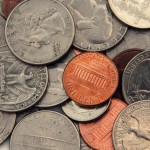 Location: Your computer, on-line
Location: Your computer, on-line
Date: September 24, 2013
Time: 2:00 PM – 3:30 PM EDT / 11:00 AM – 12:30 PDT
Instructor: Shadi Eskaf
How you charge your customers is often as important as how much you charge them. This webinar will describe the different elements of water rate structures and when it is appropriate to favor certain elements or rate structure designs over others based on the unique characteristics and objectives of water systems. The elements include customer classification, base or flat charges, volumetric rates, seasonal pricing, etc. Examples will be discussed and participants will have opportunities to ask questions.
How a water system charges its customers for their water use affects revenue generation and can either help or hinder varying objectives of the utility. Several designs of rate structures can be used to produce the same level of revenue for a water system, but each rate structure promotes fairness, affordability, conservation, business incentives and other objectives at varying degrees. Do you have many customers on low or fixed incomes? Do you have very high fixed costs and a small customer base? Do you have a mix of residential and commercial customers? Do you want or need to encourage water conservation? Does your water system serve a seasonal community? Do you not charge based on metered use, or include the price for water as part of rent for housing?
This training is best suited for individuals who make financial decisions on behalf of small water systems or who assist small water systems in setting rates: utility managers, finance staff, system owners, board members, consultants, technical assistance providers, financial regulators, and other interested parties.
Do-It-Yourself Excel-Based Tool for Water Utilities:
Water & Sewer Rates Analysis Tool, (do-it-yourself cash flow model) EFC at UNC-Chapel Hill
Examples of a Variety of Rate Sheets from Small Water Systems:
PDF document of several rate sheets (may not be current rates)
